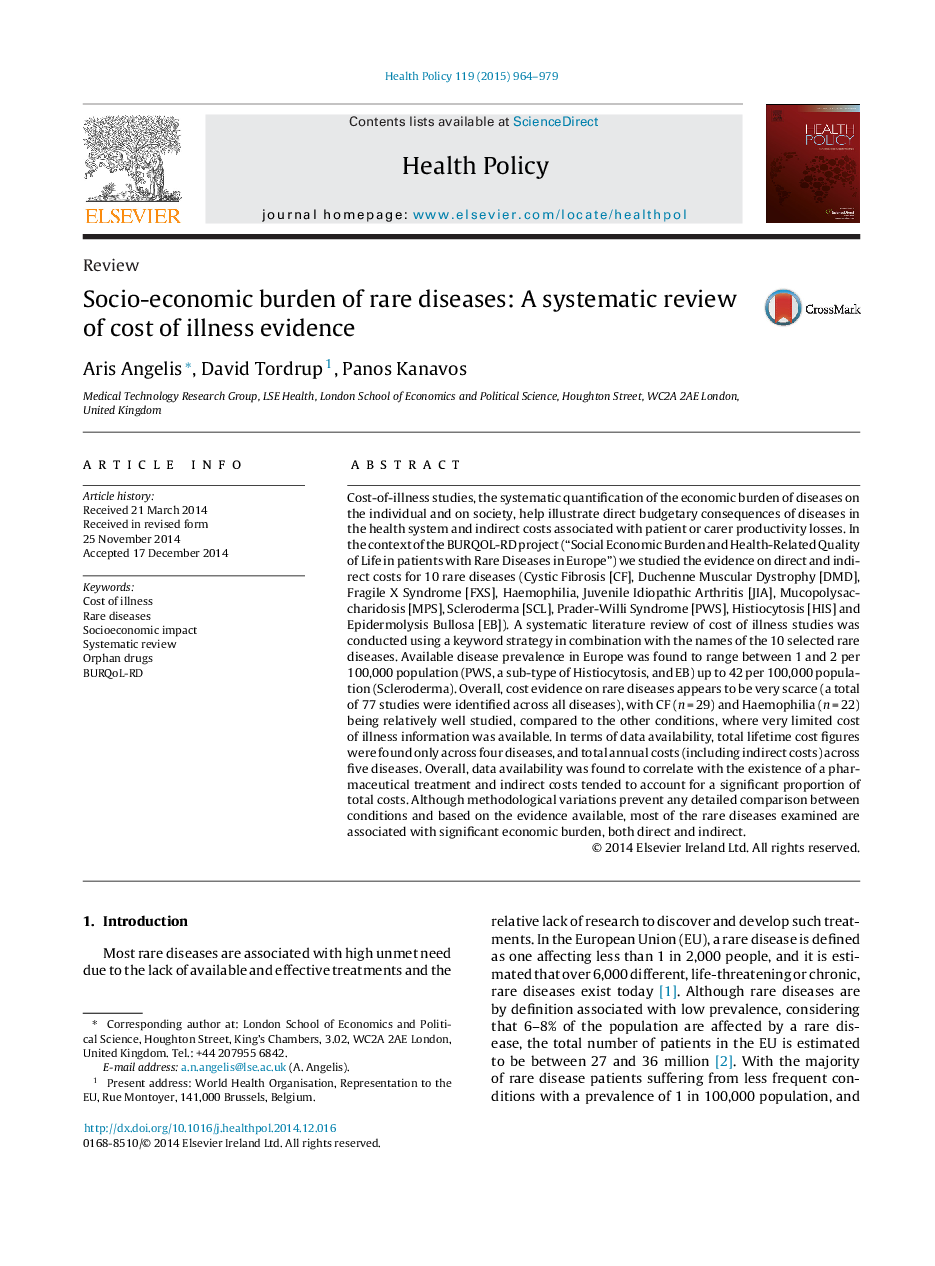| Article ID | Journal | Published Year | Pages | File Type |
|---|---|---|---|---|
| 6239309 | Health Policy | 2015 | 16 Pages |
â¢We systematically reviewed the socioeconomic cost literature for 10 rare diseases.â¢Direct and indirect costs incurred by patients, carers and society were searched.â¢77 studies were included with an unequal distribution of studies over disease types.â¢Level of existing evidence is highest for diseases with available drug treatments.â¢Indirect costs are in most cases of similar or higher magnitude than direct costs.
Cost-of-illness studies, the systematic quantification of the economic burden of diseases on the individual and on society, help illustrate direct budgetary consequences of diseases in the health system and indirect costs associated with patient or carer productivity losses. In the context of the BURQOL-RD project (“Social Economic Burden and Health-Related Quality of Life in patients with Rare Diseases in Europe”) we studied the evidence on direct and indirect costs for 10 rare diseases (Cystic Fibrosis [CF], Duchenne Muscular Dystrophy [DMD], Fragile X Syndrome [FXS], Haemophilia, Juvenile Idiopathic Arthritis [JIA], Mucopolysaccharidosis [MPS], Scleroderma [SCL], Prader-Willi Syndrome [PWS], Histiocytosis [HIS] and Epidermolysis Bullosa [EB]). A systematic literature review of cost of illness studies was conducted using a keyword strategy in combination with the names of the 10 selected rare diseases. Available disease prevalence in Europe was found to range between 1 and 2 per 100,000 population (PWS, a sub-type of Histiocytosis, and EB) up to 42 per 100,000 population (Scleroderma). Overall, cost evidence on rare diseases appears to be very scarce (a total of 77 studies were identified across all diseases), with CF (n = 29) and Haemophilia (n = 22) being relatively well studied, compared to the other conditions, where very limited cost of illness information was available. In terms of data availability, total lifetime cost figures were found only across four diseases, and total annual costs (including indirect costs) across five diseases. Overall, data availability was found to correlate with the existence of a pharmaceutical treatment and indirect costs tended to account for a significant proportion of total costs. Although methodological variations prevent any detailed comparison between conditions and based on the evidence available, most of the rare diseases examined are associated with significant economic burden, both direct and indirect.
